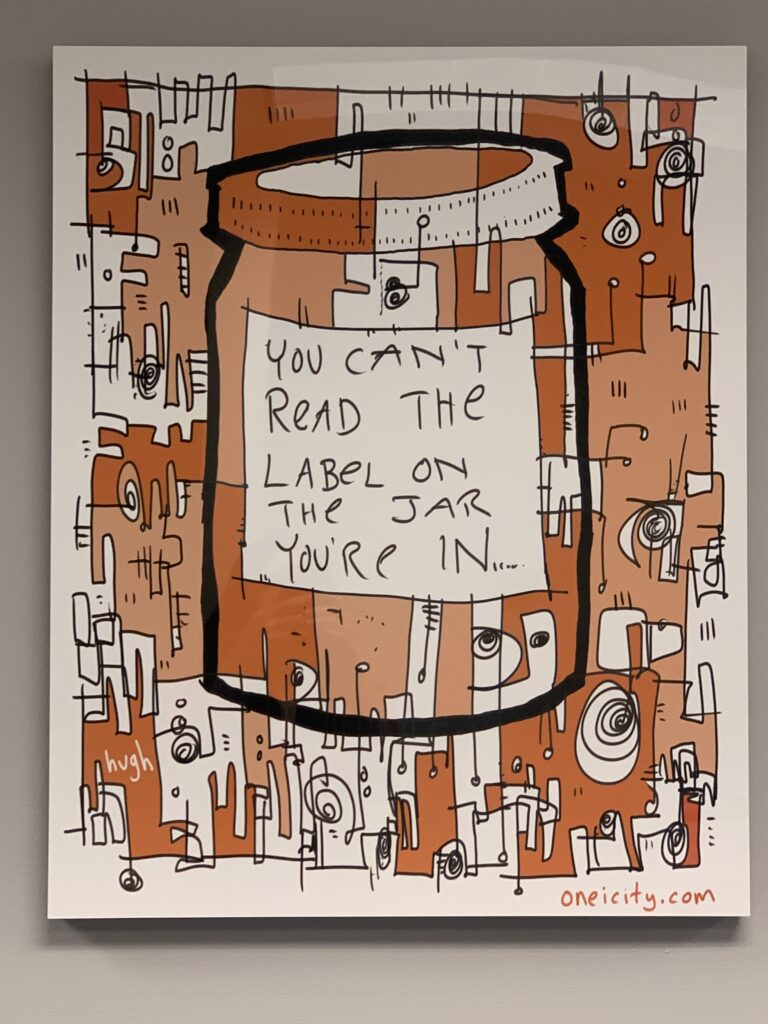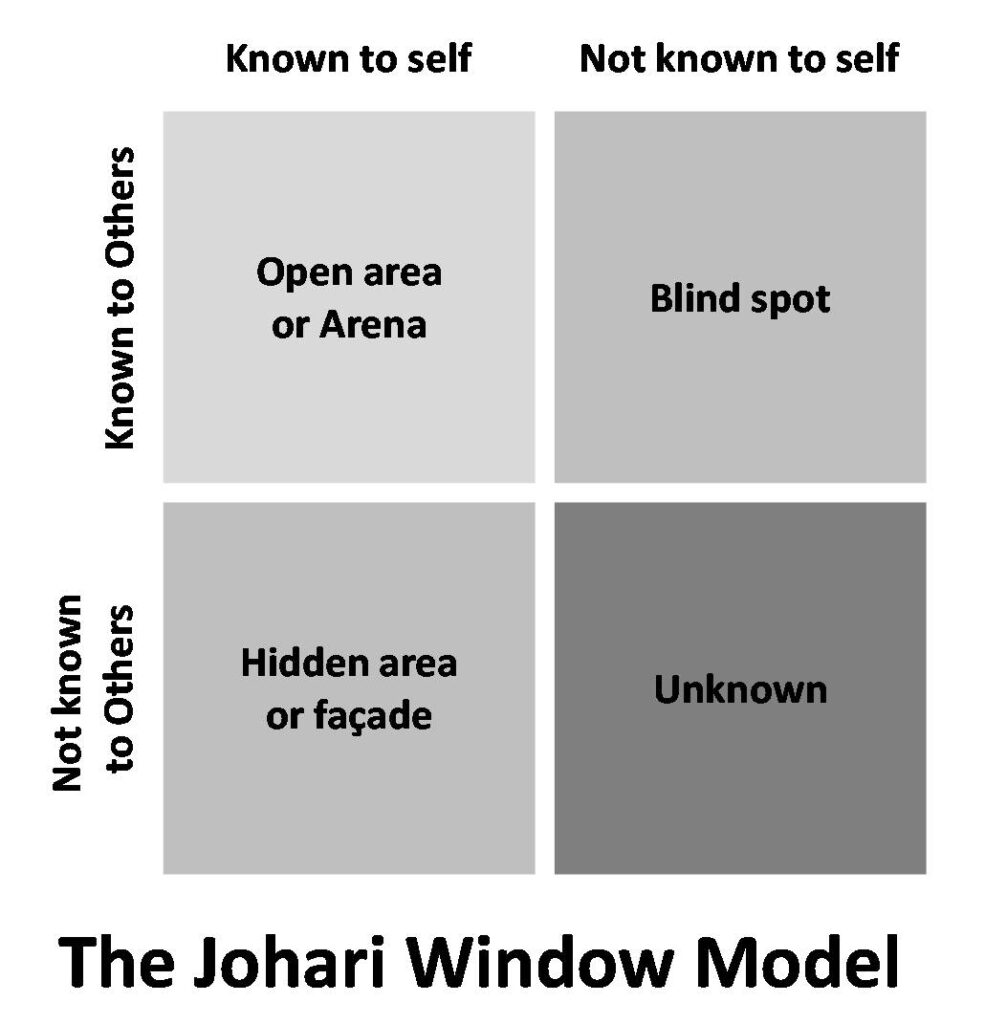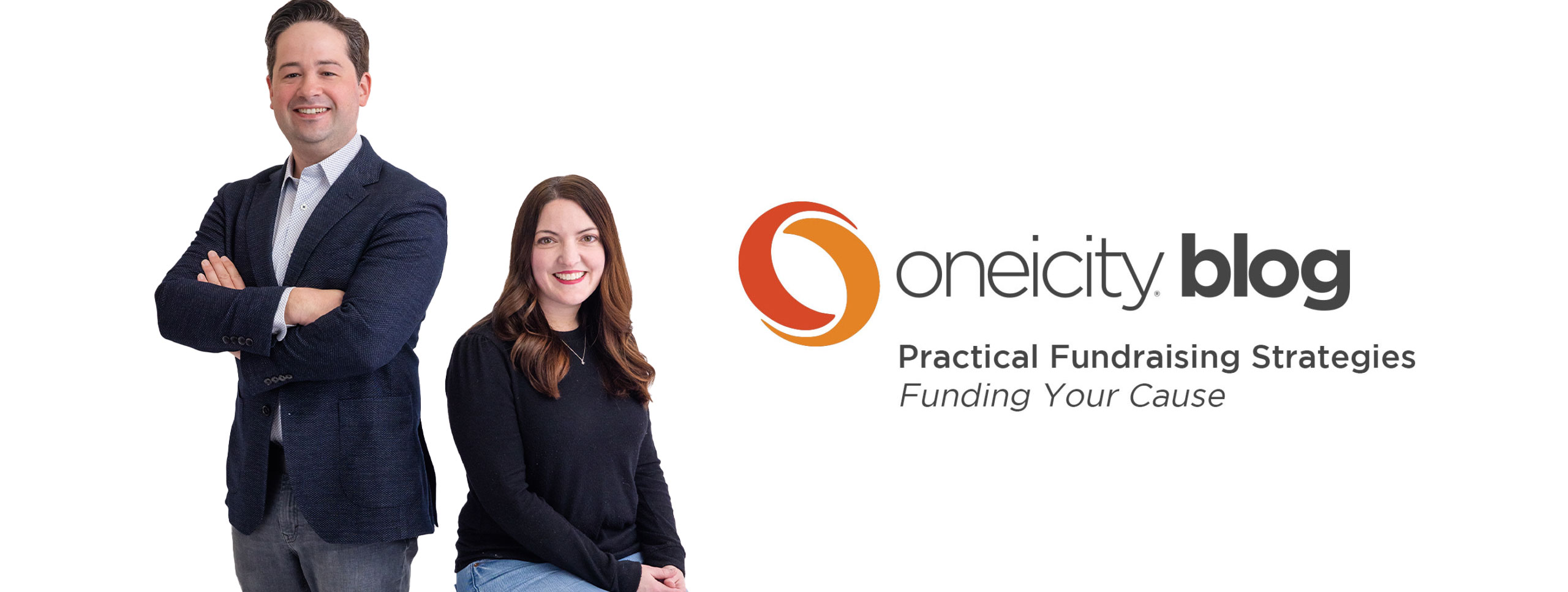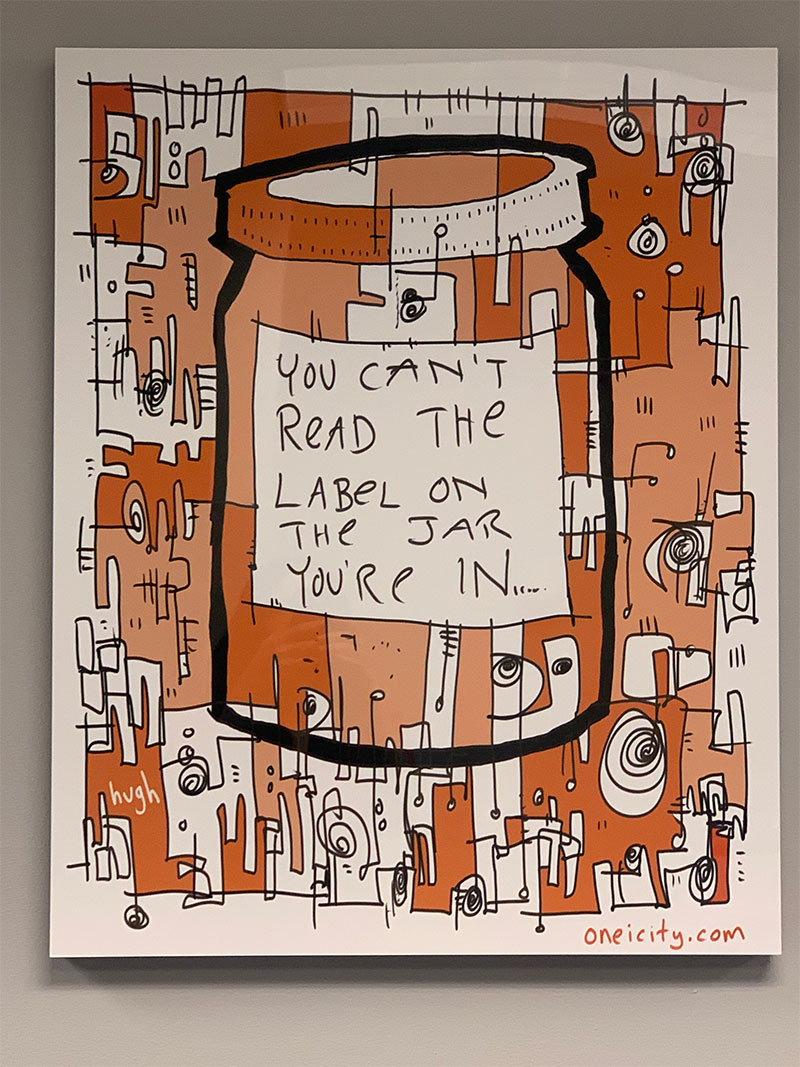One of the easiest fundraising traps to fall into is one you won’t even see coming. (That’s a joke that will be hilarious in a second.)
It isn’t one that’s just for nonprofit organizations or ministries. Any person, organization, or business can fall into this trap.
In fact, it’s one that’s so easy to fall into- and so important to be aware of- that there’s a piece of art at Oneicity HQ to remind us of it:
You can’t see the label on the jar you’re in.

Few of us have ever actually been trapped in a literal glass jar. If you have, you get how true this is.
For those who haven’t…It means that you can’t be objective about yourself.
Whether it’s your organization, your ministry, or you personally, there are blind spots. (This is a good place to pause and laugh at the joke from earlier.)
But the blind spots aren’t the trap- it’s ignoring the blind spots, not believing they exist and can hurt you.
What is the Trap?
To understand the trap better (and thus how to avoid it), we need to look at a window instead of a jar.
Johari’s window, to be exact. You might remember it from a psychology or communication class at school. Here’s a great website that explains it in detail.
Basically, Johari’s window evaluates the perception between you and others, and identifies two main areas: things known to self and things known to others. When a grid is created (like a window pane with four quadrants) you get Johari’s window:

One of those quadrants is the area that’s known to others, but unknown to you. It’s your blind spots. You can’t identify them or even realize them on your own.
There are things about your nonprofit or ministry that are obvious to others (such as your donors) that you aren’t aware of.
Now, somebody may think, “Nope, I completely know how others perceive my nonprofit organization. This is how we are, this is how they see us.”
Hope they didn’t hurt themself when they fell into the trap.
There will always be blind spots you don’t know about. And because you can’t see a blind spot. . . you don’t know about them.
But why are blind spots bad?
Not all blindspots are bad of course.
Maybe people view your organization better than you think. Or, maybe they see good aspects of your ministry that you tend to ignore.
But there could also be negative blind spots you aren’t seeing that donors see. Bringing those into view can show you some weakness or areas you need to improve.
But good or bad, you still need to know about them.
By ignoring blind spots, you’re missing valuable insight to help you connect with your donors better.
So what can you do?
Yes, you’re always going to have blind spots, but that doesn’t mean that you can’t do anything about them.
The best way to learn about blind spots is through feedback from others. Talk to your donors, community members, board members, staff and volunteers, or even outside consultants.
Listen to what they tell you about how they perceive your organization.
You can’t read the label on the jar, but they can. And they can tell you what the label says.
If you aren’t sure how best to gain feedback, give us a holler. We’re always glad to chat and help create a plan. Email us at: howdy@oneicity.com

